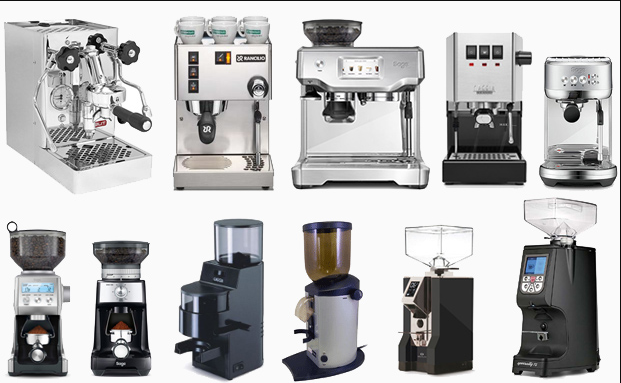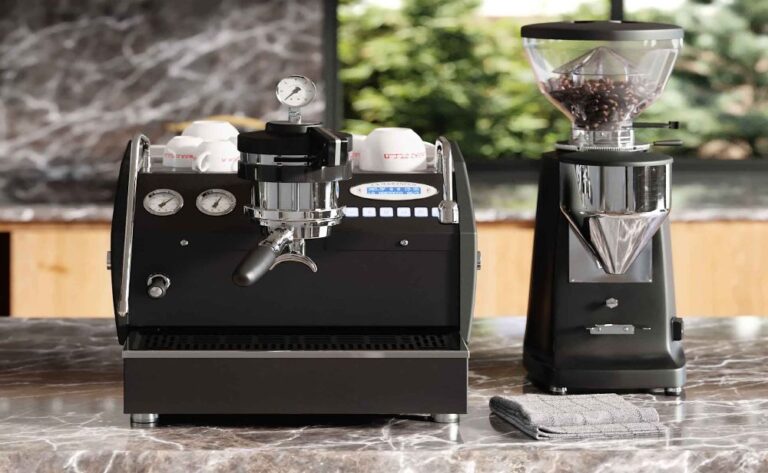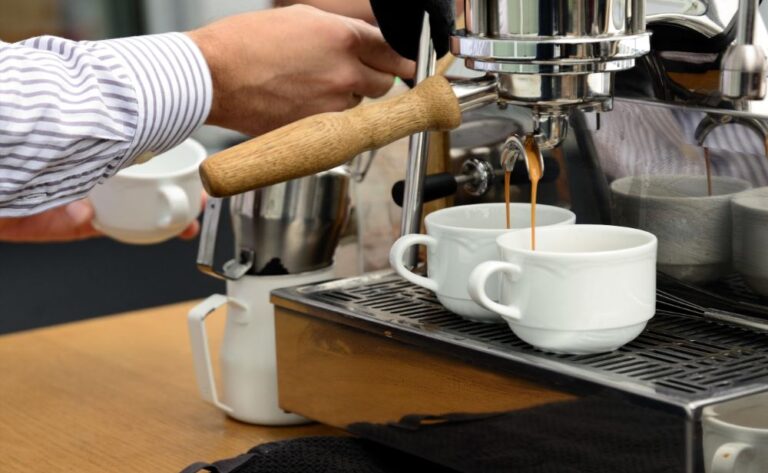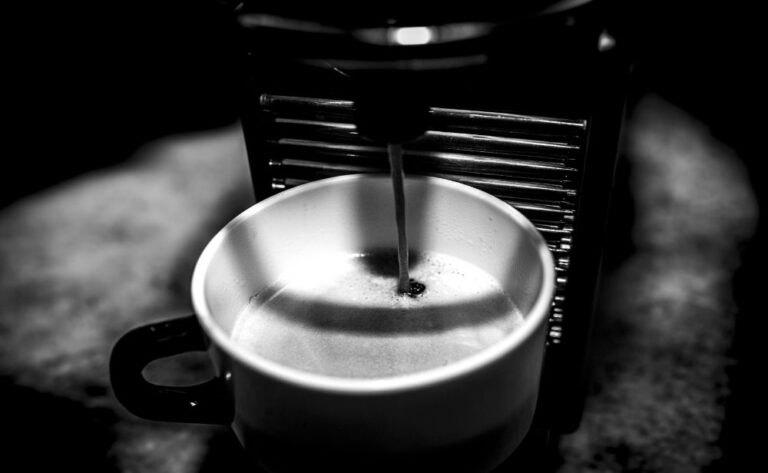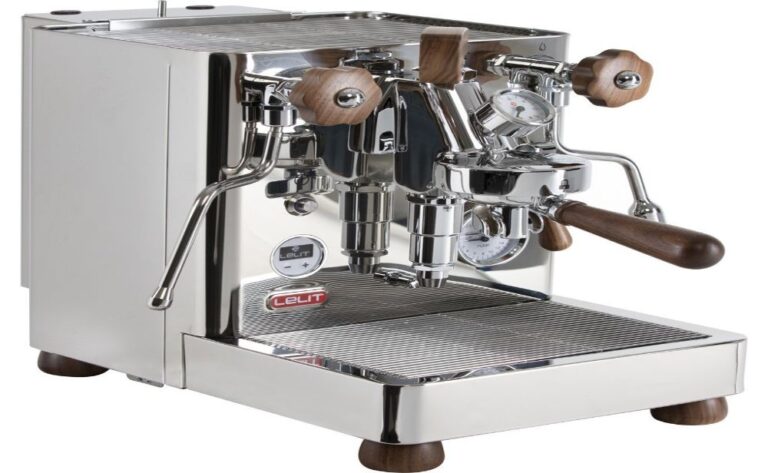
There is no need to look any further if you are searching for a home espresso machine that is capable of pulling absolutely superb shots than the $600 Breville Barista Express.
From what I’ve seen, there are mostly two categories of people who drink espresso. The first group does not care where their elixir comes from, how much it costs, or how it is created; all that matters to them is that they obtain it as quickly as possible. The second group of people has the pipe goal of reproducing espresso alchemy in their own homes on a shoestring budget, and they are more than eager to get their hands filthy in the process. If you fall into the second category, purchasing the semi-automatic Breville Barista Express espresso machine for $600 will be like a dream come true for you.
THE GOOD
A better cup of espresso can be made with the semi-automatic Breville Barista Express than with more expensive machines. In addition to having an appealing design made of stainless steel, it is also quite simple to operate and maintain clean. In addition to that, it features a burr grinder that is incorporated right in, allowing for effortless dosing of coffee grounds.
THE BAD
In comparison to sophisticated super-automatic machines, the Breville Barista Express demands the user to put in some effort when operating it.
When you use the Barista Express, you will feel just like a professional barista since it has the perfect combination of adjustable controls and manual settings. In addition to being easy to use, it performs just as well as machines that cost hundreds of dollars more and grinds coffee beans directly into its portafilter. Because using this device requires some work and patience on the user’s part, it is obvious that not everyone would find it useful. Those who want their concentrated coffee fix with the least amount of hassle possible (and are prepared to spend for it) may look into purchasing a fully automatic machine like as the Philips Saeco GranBaristo Avanti (which costs $3,000) or the Krups EA 9010 (which costs $2,500).
At a fraction of the cost of other home espresso makers, the Breville Barista Express brews quality espresso right in your own kitchen.
Structure and characteristics
The Breville Barista Express has dimensions of 16 inches in height, 13.5 inches in width, and 12.5 inches in depth, and it is nearly the same size as a conventional drip coffee maker, while having around twice as much width. The Breville espresso maker is larger and more physically robust than tiny espresso machines like the De’Longhi Dedica and the Mr. Coffee Cafe Barista. Both of these machines are available from De’Longhi.
In addition to its girth, the Breville machine provides the impression that it is serious about its work simply based on its appearance.
The chassis is made of stainless steel, and it has a hefty steel portafilter and handle attachment, which all contribute to its appearance. However, the huge bean hopper, accompanying burr grinder, and pressure gauge are what really set it apart as a professional piece of equipment. These functions are often only found on more expensive semi-automatic and fully-automatic models of espresso machines.
It is the pressure gauge that most effectively conveys the brewing capabilities of the Breville. The circular dial, which is placed front and center on the control panel, indicates whether or not the internal pump is forcing hot water through your coffee grinds within the appropriate pressure range.
Insufficient force will cause the water to move through the grounds too rapidly, causing a significant portion of the coffee’s potential flavor to be lost. This will result in espresso that is inadequately extracted and has a sour taste. If there is insufficient flow of hot water while the pressure is high, the resulting espresso beverage will likely have an unpleasant bitter taste. In order to save money or conceal the fact that they have variable performance, manufacturers of cheaper espresso machines frequently omit pressure gauges.
Large circular buttons labeled “Power,” “Filter Size,” and “Program” are located to the left and right of the dial. There are also two additional buttons that allow you to choose between brewing a single or double shot of espresso. In this section, you’ll also find a knob that allows you to adjust the amount of coffee grounds that the grinder will automatically create for espresso filters of either single or double capacity.
The ground coffee may be placed directly into the steel portafilter of the Barista Express, which makes life much simpler. From that point on, it is a piece of cake to gently press (or tamp) the contents of the portafilter down (Breville includes a metal tamper) and twist the entire apparatus (handle, filter, and all) into position under the machine’s single brew head. From there, it is a piece of cake to brew a cup of coffee.
The steam wand, which is mounted with a swivel joint, and the hot water nozzle, which is located to the right of the brew head, are both actuated by a huge knob located on the right side of the machine. The grind size selector can be found on the very left side of the appliance. It has 18 different settings, ranging from “coarse” on one end to “fine” on the other end. A drip tray that is simple to clean and a detachable water tank that has its own robust handle are two other examples of the thoughtful details included in this product.
Pull shots like a barista
I will freely admit that I found all of the knobs, buttons, and dials on the Breville Barista Express to be somewhat scary at first. Because of the comprehensive handbook, I was able to grasp the fundamentals of the procedure with only a few test shots and little practice. First, I loaded both the bean hopper and the water tank with beans and water. The next thing I did was place a double-walled, double-shot filter into the portafilter basket (I always go for double shots), and then I pushed it backwards into the grinding cradle.
One quick push followed by a release of a button located at the back of the cradle causes the grinder to automatically fill the filter basket to the size you have chosen, either single or double. The amount of coffee that is ground depends on the setting that you choose using the dial that controls the amount of coffee that is ground. You can also grind by hand into the portafilter if you push it back and maintain its position. The grinder is put to a stop when the reverse pressure applied to the portafilter handle is released.
At this point, you press down on the grounds, twist the portafilter into position, and lock it under the brewhead before pressing the button for either a single or double shot of espresso. With any luck, a steady stream of espresso liquid that is thick and highly concentrated will flow into the glass or cup you’re using. Keep in mind that the quality of your espresso draw can be affected by a variety of things. These include the coarseness of the grounds that are used, the quantity of grounds that are used, the amount of pressure that is applied when tamping, and whether or not the machine has been properly primed just before the brewing process begins.
The combination of skill and flair
When I first started using the Breville Barista Express, I had a hard time producing a drinkable shot with it. After I had perfected my method, I was able to have some of the finest espresso that I have ever had from a home machine. For instance, I originally adjusted the coarseness of the grinder to level 5, but the shots that resulted tasted decent while being dull and lifeless. They were, in essence, a pale imitation of what is achievable with the Colombian coffee beans that I purchased from Costco.
The results that the refractometer took of the shots that were pulled at these settings corroborated what I tasted, with the average percentage TDS (total dissolved solids) returning as 7.7 percent. The final volume of my espresso, which was 1.6 fluid ounces, was pushed through 0.5 ounces of coffee grounds contained within the portafilter. This results in a poor extraction percentage of 13.1%. In the same way that drip coffee should have a high enough TDS, ideally, espresso should have a TDS that is high enough to attain an extraction percentage that falls between 18 and 22 percent.
After that, I adjusted the coarseness of the grinder to level three and gave it another try. My perseverance was rewarded with a shot from the Barista Express that was simply extraordinary. The flavor was full-bodied and densely packed with layered flavors such as chocolate and smoke, with a sweet caramel note serving as a counterpoint. The crema had a gorgeous golden brown color and was quite thick and stout. In addition, I found that this shot had a higher TDS percentage than average, which came out to 12.4%, giving it a good extraction rate of 18.6%. After that, drawing shots after shots of similarly wonderful espresso was a piece of cake for me.
In point of fact, the coffee that I drank from the Breville Barista Express tasted better and lingered longer on the palate than the coffee that I made with either the Philips Saeco GranBaristo Avanti (4.2 TDS Avg) or the Krups EA 9010 (3.9 TDS Avg), both of which are exceptional but prohibitively expensive home appliances.
Naturally, just like with any other semi-automatic espresso machine, if I changed any of the brewing settings, there was no telling what the outcome would be. For example, when I let my avarice get the better of me and added a greater quantity of grinds or tamped the filter down too hard (or both), I often lost control of the perfectly calibrated brewing pressure that I had achieved. In this particular scenario, the filter was unable to take in or release a sufficient amount of water. In any case, the end product was unfit for consumption.
By utilizing the nozzle for hot water, it is possible to save an espresso shot that was pulled through the machine at an unusually high pressure, sometimes known as a “short.” Even when I messed up a shot, the machine was able to blend the hot water and espresso in a way that produced an Americano that was incredibly flavorful and surprisingly enjoyable.
Using the Barista Expresses was really easy for me, and I had no problems steaming milk. After the steam boiler had reached temperature, which took around twenty seconds, it had sufficient power to finish what needed to be done. Other models, including the Mr. Coffee Pump Espresso and the De’Longhi Dedica, had a timer that shut off after a few minutes, while the Barista Express steam wand could nearly run without stopping.
In order to maintain its proper functioning, an espresso machine of any kind, including the Breville Barista Express, needs to be cleaned on a regular basis. This espresso machine is reasonably simple to clean when compared to other super-automatic devices because it has a significantly lower number of moving parts and does not have dirty milk reservoirs.
If you remember to remove the used grounds puck from the portafilter immediately after pulling a shot, give it a brief rinse, and then run hot water through the brew head, the machine will continue to function properly. The drip tray can be removed and emptied without much effort at all.
Conclusion
Making espresso using the Breville Barista Express requires a significant investment of time, energy, and skill. This is especially the case if you’ve been accustomed to the push-button operation of super-automatic espresso makers such as the Philips Saeco GranBaristo Avanti (which costs $3,000) and the Krups EA 9010 (which costs $2,500). And despite the fact that you don’t have to do any work in advance before you can enjoy drinks from those goods, you’ll undoubtedly be busy maintaining them on a regular basis, either by emptying drip trays or doing daily, weekly, and monthly cleaning.
Those who are able to exercise the kind of patience required to continue with the $600 Breville Barista Express, adjusting its settings and the different possibilities that it offers, etc., will be highly rewarded and will ultimately spend much less money. Not only is it capable of producing better coffee than cheaper espresso machines like the De’Longhi Dedica and Mr. Coffee Cafe Barista, but it also produces superior flavor than even luxury models like the aforementioned Philips Saeco and Krups at a fraction of the price. This is because the Express produces more crema, or foam, in the coffee than these other models. There are other sophisticated Italian machines available for purchase, like as the Gagglia Classic, which costs $400, but unlike the Breville, it does not have a grinder. Because of all of these factors, our editor has decided that the Breville Barista Express is the best home espresso machine.
